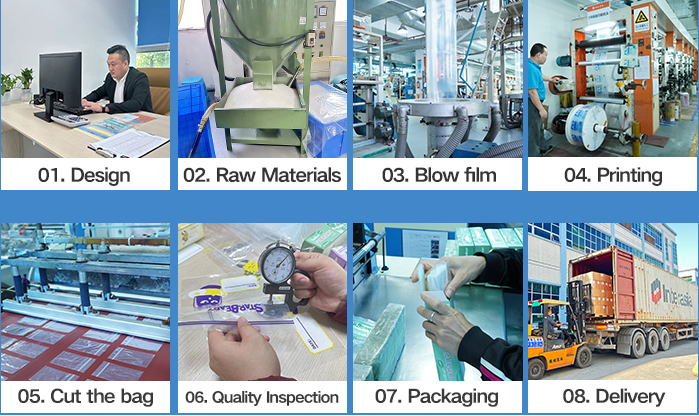Understanding PE Plastic Bags: Environmentally Friendly Packaging Solutions
In the realm of modern packaging, the PE plastic bag stands out as a versatile and environmentally conscious solution. PE, or polyethylene, is a widely used polymer in various industries, known for its durability, flexibility, and recyclability. In this blog post, we delve into what PE plastic bags are, their uses, advantages, and most importantly, their role in reducing environmental pollution.
What is a PE Plastic Bag?
PE plastic bags are packaging solutions made from polyethylene, a thermoplastic polymer derived from ethylene gas. These bags come in various forms, including flat bags, gusseted bags, and the popular PE Ziplock Bag. The manufacturing process involves melting down PE resin pellets and then shaping them into the desired bag form through extrusion or blow molding techniques.
Characteristics and Production Process
PE plastic bags exhibit remarkable characteristics that make them ideal for packaging applications. They are lightweight, transparent, moisture-resistant, and possess excellent tensile strength, ensuring the safe storage and transportation of goods. Moreover, PE plastic bags can be customized with prints and designs, making them perfect for branding purposes. The production process of PE plastic bags is relatively straightforward and energy-efficient, contributing to their widespread use across industries.
Environmental Benefits
One of the most significant advantages of PE plastic bags lies in their environmental performance. Unlike traditional single-use plastic bags made from non-biodegradable materials, PE plastic bags are recyclable and can be easily processed into new products. Furthermore, the lightweight nature of PE plastic bags reduces transportation emissions and energy consumption compared to heavier packaging alternatives.
Research has shown that PE plastic bags have a lower carbon footprint and water footprint compared to other materials like paper or cotton bags. A study by the Environmental Protection Agency (EPA) found that PE plastic bags generate fewer greenhouse gas emissions throughout their life cycle, from production to disposal, making them a more sustainable option.
Uses and Applications
PE plastic bags find extensive use across various industries and households. They are commonly used for packaging food items, pharmaceuticals, apparel, and electronics due to their protective properties. PE Ziplock Bags, in particular, are favored for their resealable feature, allowing for convenient storage and reuse. Additionally, PE plastic bags are widely used in retail and e-commerce for product packaging and shipping purposes.
Importance in Reducing Environmental Pollution
In the fight against environmental pollution, the role of PE plastic bags cannot be overstated. By promoting the use of recyclable and lightweight packaging solutions, such as PE plastic bags, businesses and consumers can significantly reduce the accumulation of plastic waste in landfills and oceans. Moreover, the recyclability of PE plastic bags encourages proper waste management practices and contributes to the circular economy.
In conclusion, PE plastic bags offer a sustainable packaging solution with numerous benefits for both businesses and the environment. Their versatility, recyclability, and environmental performance make them an essential component in reducing plastic pollution and fostering a more sustainable future.
Post time: Jun-13-2024






